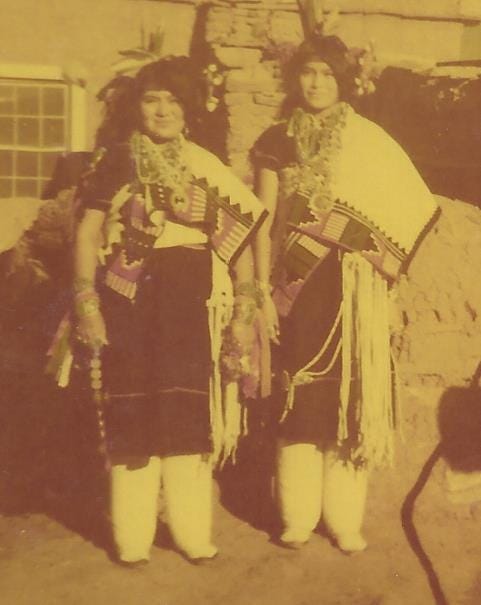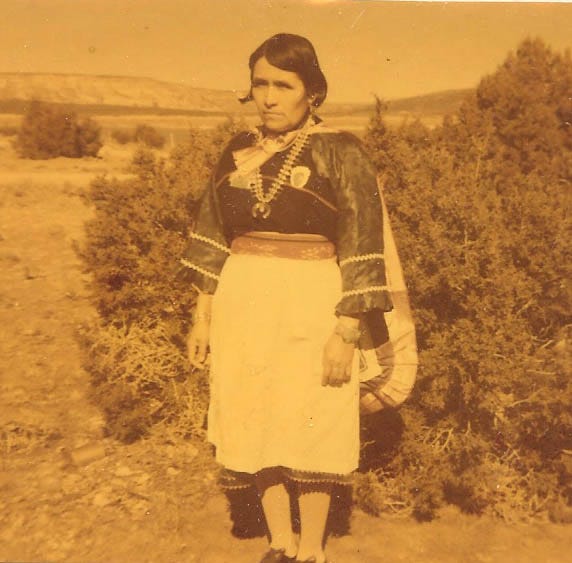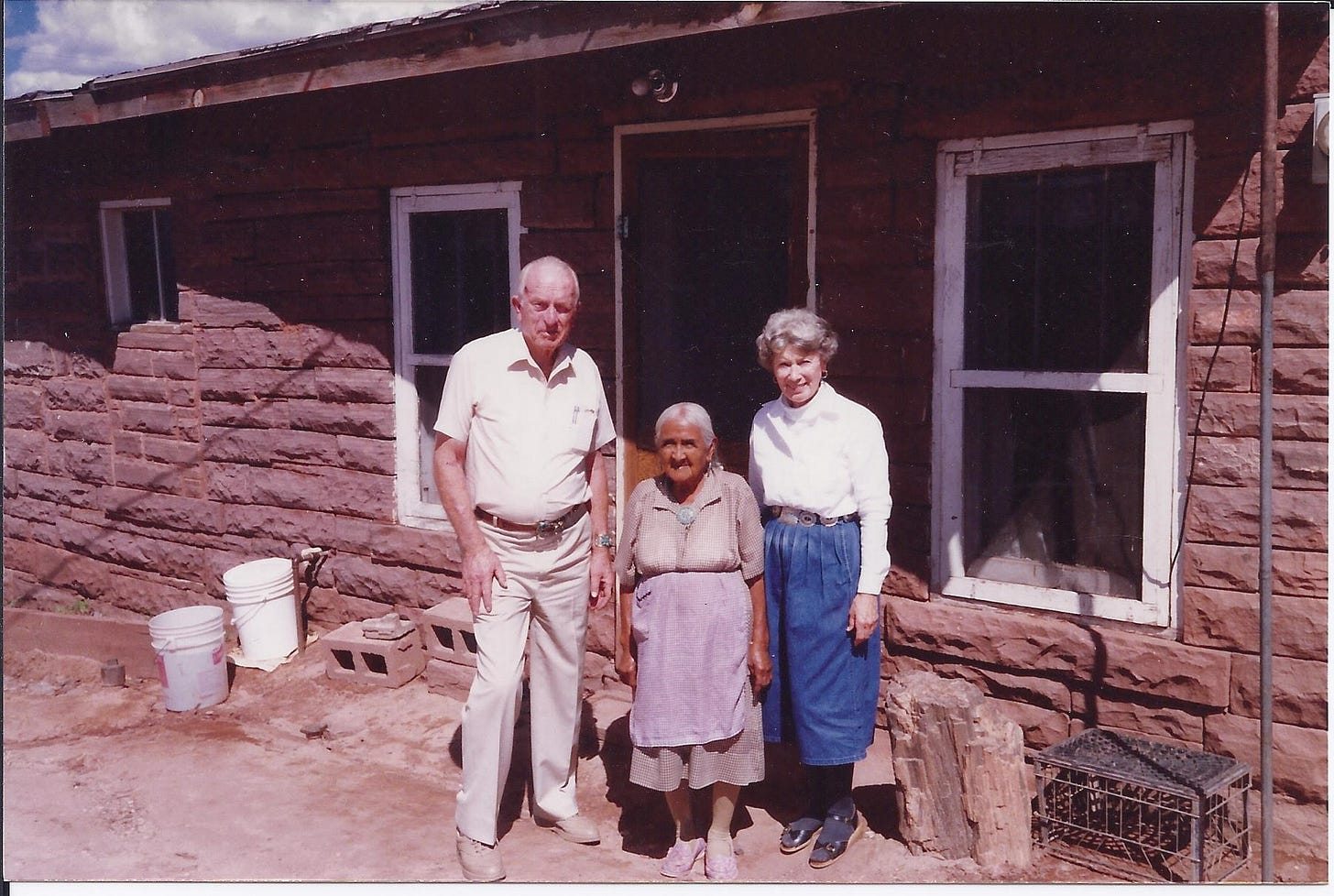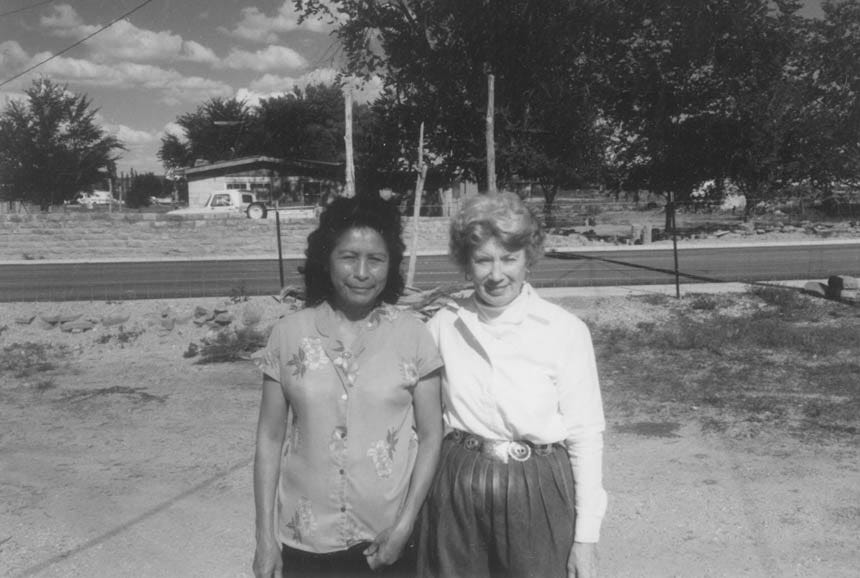My grandfather’s family came west with Daniel Boone and settled in Missouri. Following his completion of business school, Granddad came further West in 1898. He took a job as a streetcar operator in Albuquerque and met the owner of Gallup Mercantile (Merc) which owned the supply operation for the McGaffey Company in the Zuni Mountains southeast of Gallup, New Mexico and Navajo trading posts. McGaffey was a lumber company that hired many Navajo workers. George E Kennedy became the manager / trader for the Merc operation. The owner, Hans Neuman, offered to stake Granddad in a trading post. He was looking to build trading posts that he could supply. At the time there were about twenty trading posts on the Navajo reservation which was, and still is, the size of West Virginia. For over a year George E Kennedy searched for a suitable trading post site. He had to conduct his searches on horseback and at least 150 miles from McGaffey. The site needed access to water and people. In 1913 my grandfather moved his family to the remote Navajo reservation and built a trading post and family home 100 miles northwest of Gallup. (125 miles from McGaffey) For the next 25 years he lived among the Navajos. Unlike other North American traders, Navajo traders lived with the people. In most instances the only friends and neighbors that the traders had were trading customers and their families. The Navajos spoke no English, had no money, and no jobs; hardly stimulating conditions for success. All of his business was done with trading. He traded with his customers and in turn traded with the Merc with which he traded livestock, wool, pelts, and rugs. Thus began a family legacy that spanned over one hundred years and three generations. I am part of the third trading generation beginning at age nine. Except for college and a brief corporate career, I was in the trading business for most of my life. The trading business has provided me with unique opportunities and experiences.
” Live a good life so that when you get old, you can enjoy it again with your memories”.
Ben Franklin
“A legacy is built piece by piece”.
When I was a young boy, we lived in Zuni Pueblo where Dad was a trader. Mom was always busy with kids as our family was growing. In Zuni there was me, Lynn, and George. Five others would follow. It was especially taxing because we had no heat or oven because of the War shortages. Our adobe home was heated by fireplaces in each room. Mom always had housekeeping help from Zuni women.
Anges Naktewa was a young, beautiful girl that helped for over a year. Then, as I remember, she got married.
Agnes is on the left.
When we moved to Gallup, Daisy Nampeyo Hooee and then Amy Chuyate lived with us to help Mom. Dad was bedridden for a year following back surgery.
Daisy had been widowed by the loss of her husband, Leo Poblano, who worked with Dad. He was killed while fighting fires in California. Zuni Pueblo had an elite firefighting force that was in constant demand. When the crew was called, it was like the National Guard, they left their jobs and went to fight fires. They painted colorful Zuni symbols on their helmets
Daisy worked with Mom in Zuni and then moved to Gallup with us. Her room was equipped with a silversmith workbench. She was a happy woman and often sang Hopi and Zuni songs while she worked. After a few years, she moved back to Zuni and married Sydney Hooee. She later organized Zuni women to make pottery and sing Zuni songs. They became known as the Olla Maidens from the Zuni tradition of carrying pots of water from the river on their heads. Daisy was from the famous Hopi pottery family, Nampeyo
Daisy is on the right.
When Daisy left, Amy Chuyate moved to Gallup and lived with us. She brought her young daughter, Betty, and they stayed with us until Betty came of school age. Then they moved back to Zuni. Amy was a small, quiet woman and worked hard to keep her young daughter in tow, or entertained in her room, while still keeping up with all of us. After she went back to Zuni, Mom and Dad would periodically visit her.
Amy Chuyate
Mom and Dad with Amy in Zuni
In the late 70s, a young Zuni woman, Annabelle came to work with Mom. Her husband worked in the shipping department of Gallup Indian Trading. Sometimes he would not return from lunch, which meant that he was settled in at a bar. The store would call Mom and she and Annabelle would go bar hopping looking for Annabelle’s husband. Both were small women and weighed about 105 pounds each.
While looking for Annabelle’s husband, they were on a mission and walked into bars searching for their quarry. Two tiny women walking into a bar were showstoppers. They would go to as many bars as necessary and when they found him, they either brought him home to sober him or took him back to work. There is nothing like a scorned Zuni woman and Annabelle would deliver an earful.
Mom and Annabelle
Annabelle was part of two family weddings before I left for college. She was a quiet, kind lady. She and her husband drove to work each day from Zuni, 38 miles. In the late early 80s, she was frequently ill. After several months she told Mom that she was told to return to the village. She was being pressured by the Zuni women for spending so much time away from her people. Zunis call it witching. We never saw her again. Sometimes when I was in Zuni, I would make inquiries about her, but they were futile. It was as if she had vanished.
Throughout the time we dealt with Zuni silversmiths, it was primarily the womenwith whom we dealt. Their responsibilities included family welfare. When I had jewelry orders, it was the women that I could count on. They never procrastinated nor said that an order couldn’t be handled. They just did it and they were always happy about it. The men had other responsibilities and included kiva work and hunting.
There is nothing like watching little old Zuni ladies prepare for Shalako each year. They can wrestle a side of beef or a mutton carcass and knead bread dough in a washtub. It is as though they are super-human.
The women are the bedrock of the Zuni people.
Zuni women preparing meat carcesses for Shalako
Next Week: Trying to track down a stolen Navajo rug











